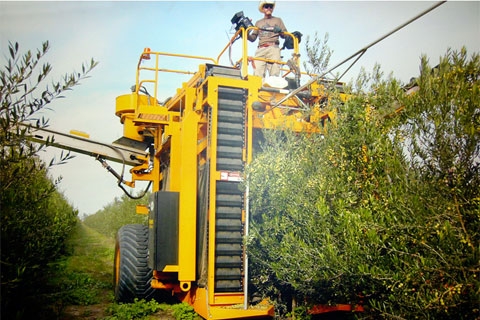A traditional crop is getting a modern makeover – and UC Davis is cultivating its growth in California.
The UC Davis Olive Center last month hosted a symposium on super-high-density olive production – a relatively new practice that has fueled the expansion of California’s olive oil industry. The production system, developed in Spain, reached the Golden State in 1999 and has taken off in the past five years. California accounts for almost all domestic olive oil production – now 850,000 gallons a year – and is poised to become a global player.
“California could within the next 10 years rank among the top 10 olive oil producers in the world,” said Dan Flynn, executive director of the UC Davis Olive Center.
Traditionally, olives have been planted at about 100 trees per acre and harvested by hand. Super-high-density olives are planted at more than 500 trees per acre and harvested by machine. The method lowers harvesting costs and speeds the turnaround from orchard to mill, a key to freshness and flavor. More than 100 growers attended the sold-out symposium to get the inside scoop – “a great deal of useful information,” Flynn said.
The self-funded UC Davis Olive Center, launched in 2008, is the only academic center of its kind in North America. Collaborating with industry, it published an olive production survey in November. The center made headlines with its just-published study that many premium-priced imported olive oil brands labeled as extra virgin – even those of EVOO queen Rachael Ray – aren’t as pure as they claim (California oils fared better). Upcoming projects could include research on super-high-density yields, costs and compatibility.
With olive oil consumption growing nationally, the climate is right in California, which has about 17,000 acres of super-high-density olives after 4,500 acres were planted in 2009. The most popular regions to grow olives for oil are Glenn and San Joaquin counties, putting Davis at the heart of the movement.
UC Davis has a history of helping to propel California agricultural products to worldwide prominence, such as grapes and wine. “It’s possible that something similar could happen with olives,” Flynn said.
Attached Images:
